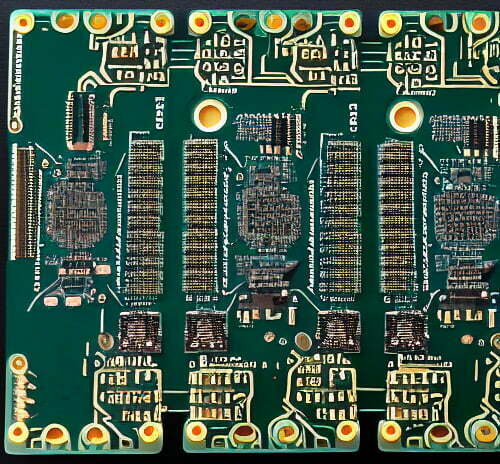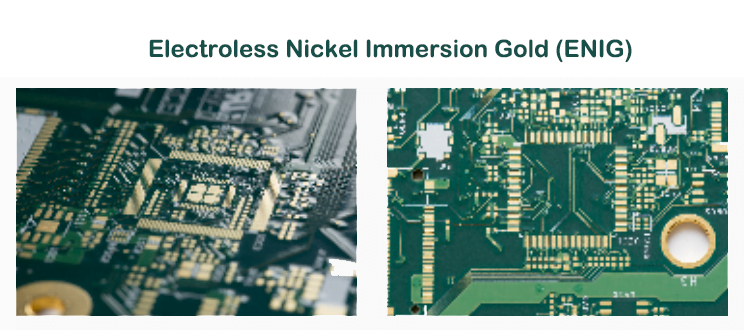In the electronics manufacturing world, you’ll hear various acronyms being thrown around. FR4 PCB is one such acronym. If you’re just getting started in electronics manufacturing or are looking for a new opportunity in this field, it’s important to understand what FR4 PCB means and how it can be used. This blog post will give you all of the information you need to know about FR4 PCB.
What is FR4 PCB?
Electronic circuit boards can be made out of a variety of different materials. FR4 (or fibreglass-reinforced epoxy) is one of the more common materials used for PCBs. FR4 is a high-quality board that’s strong and flexible, making it a great option for many different electronic projects. When you’re choosing a PCB material, it’s important to consider your product’s end use. For example, you may want to use FR4 boards for a circuit board in an industrial setting. If so, you’ll want to ensure that it can withstand the elements and any potential hazards associated with the industry.
FR4 PCB characteristics
FR-4 glass epoxy is an extremely strong, high-performance thermoset laminate material with excellent strength-to-weight ratios. FR-4 is a popular, versatile high-pressure thermoset plastic laminate material that is most often used as an electrical insulator due to its near-zero water absorption. Its mechanical and electrical properties, as well as its good fabrication properties, make it appropriate for a wide range of electrical and mechanical applications, both dry and humid.
| Parameter | Value |
|---|---|
| Density | 1.70-1.90g/cm³ |
| Water absorption (D-24/23, plate thickness 1.6mm) | ≤19mg |
| Dielectric loss factor (1MHz) | ≤0.04 |
| Dielectric loss factor (50Hz) | ≤0.04 |
| Relative dielectric constant (1MHz) | ≤5.5 |
| Relative permittivity (50Hz) | ≤5.5 |
| Parallel layer breakdown voltage (in 90±2℃ transformer oil) | ≥40KV |
| Vertical layer-wise electrical strength (in 90±2℃ transformer oil, plate thickness 1mm) | ≥14.2MV/m |
| Insulation resistance after immersion in water (D-24/23) | ≥5.0×108Ω |
| Parallel layer impact strength (simply supported beam method) | ≥230KJ/m |
| Vertical Bending Strength A | E-1/150,150±5℃≥340Mpa |
Why use FR4 PCB?
FR4 boards make a great choice for a variety of applications, including RF circuits, high-speed circuits, and high-power circuits. It’s also a good material choice if you’re using high voltages or high currents. FR4 has wide temperature range capabilities, is non-corrosive, and is highly resistant to most chemicals. It’s also a good choice if you’re looking for a lightweight and flexible PCB. It should also be noted that FR4 boards tend to be a bit more expensive than some of the other options out there, although the extra cost may be worth it for certain applications.
How is FR4 made?
FR4 PCB is created when layers of fibreglass are applied to a core material, such as epoxy. The fibreglass is then impregnated with a resin, which creates a strong and flexible board. FR4 can be produced in a number of thicknesses, allowing manufacturers to create boards with a variety of different properties. If you’re manufacturing your own PCBs and choosing the type of material to use, it’s important to account for the manufacturing process. Different types of PCBs have different maximum thicknesses when produced by a PCB manufacturer. For example, if you’re using a FR4 PCB, the maximum thickness that you can produce is 18 oz.
Pros and cons of FR4 PCB
Like any other material, FR4 PCB comes with its share of pros and cons. Let’s take a look at both sides of the equation so that you can decide if this is the right type of board for you.
Pros:
- – Versatility – With its wide range of thicknesses, FR4 boards can be used in a wide variety of applications.
- – Electrical properties – FR4 boards are very good at conducting current, which is why they tend to be used in more high-powered applications.
- – Good strength – FR4 boards are very strong, especially when compared to other materials that are used for PCBs.
- – Good durability – FR4 boards are resistant to many different elements and are very durable, making them a great choice for many different applications.
Cons:
- – Higher cost – As mentioned, FR4 boards can be more expensive than other types of PCBs.
- – Thickness – While thicker boards have their advantages, they also have a tendency to be a bit stiffer, making them harder to bend.
FR-4 vs FR-2
– FR-4 is a fire-resistant material, while FR-2 is not.
– FR-4 has a higher melting point than FR-2.
– FR-4 is more resistant to water damage than FR-2.
– FR-4 is more expensive than FR-2.
Wrapping up
If you’re looking to manufacture circuit boards, it’s important to know the different types of materials available. FR4 is a popular option due to its versatility, wide range of thicknesses, and good electrical properties. When choosing a PCB material, it’s important to consider your product’s end use. For example, if you’re manufacturing circuit boards for an industrial setting, you’ll want to ensure that the board can withstand the elements and any potential hazards associated with the industry. When it comes to choosing a type of PCB board, it’s important to keep in mind the pros and cons of each type. From there, you can make an informed decision as to what will work best for your product.








